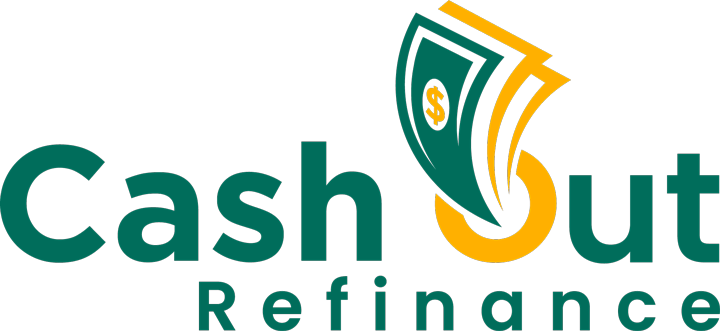Understanding 3-Year, 5-Year, and 7-Year ARMs | Adjustable-Rate Mortgages (ARM):
When choosing a mortgage, borrowers often face the decision between a fixed-rate mortgage (FRM) and an adjustable-rate mortgage (ARM). While a fixed-rate mortgage offers stability, an ARM provides initial lower interest rates and flexibility. Among ARMs, the 3-year, 5-year, and 7-year options are among the most popular.
If you’re considering an adjustable-rate mortgage, this guide will help you understand:
✅ How ARMs work
✅ The differences between 3-year, 5-year, and 7-year ARMs
✅ The benefits and risks of an ARM
✅ Who should consider an ARM
✅ How ARMs compare to fixed-rate mortgages
✅ Examples of ARMs in real-world scenarios
What is an Adjustable-Rate Mortgage (ARM)?
An adjustable-rate mortgage (ARM) is a home loan with an interest rate that changes over time. Unlike a fixed-rate mortgage, which has the same interest rate for the life of the loan, an ARM starts with a low fixed rate for an initial period, then adjusts periodically based on market conditions.
Key Features of an ARM:
✔ Lower Initial Interest Rate – ARMs offer lower introductory rates compared to fixed-rate mortgages.
✔ Adjustable Rate – After the fixed-rate period, the rate adjusts based on an index.
✔ Rate Caps – Limits exist on how much the interest rate can increase over time.
✔ Different Fixed-Rate Periods – Common options include 3-year, 5-year, and 7-year ARMs.
The structure of an ARM is typically written as 3/1, 5/1, or 7/1, where the first number represents the fixed period (years) and the second number indicates how often the rate adjusts after that period (typically every year).
Comparing 3-Year, 5-Year, and 7-Year ARMs
| Loan Term | Fixed-Rate Period | When Rates Adjust | Best For |
|---|---|---|---|
| 3/1 ARM | 3 years | Adjusts every year after year 3 | Short-term homeowners or investors |
| 5/1 ARM | 5 years | Adjusts every year after year 5 | Buyers who plan to refinance or sell within 5-7 years |
| 7/1 ARM | 7 years | Adjusts every year after year 7 | Buyers who want lower initial payments but more stability |
1. 3-Year ARM: Short-Term Flexibility
✔ Lowest initial interest rate among ARMs
✔ Best for short-term homeowners or real estate investors
✔ Ideal for those expecting to refinance or sell quickly
Example:
- Loan Amount: $300,000
- Fixed Rate (First 3 Years): 5.00%
- Monthly Payment (Years 1-3): $1,610
- Adjustment Period: Every year after the third year
Best For:
✅ Homeowners planning to sell or refinance within 3 years
✅ Investors looking for short-term property gains
✅ Buyers who want the lowest possible initial rate
2. 5-Year ARM: Balance Between Savings and Stability
✔ Lower initial interest rate than a fixed-rate mortgage
✔ More predictable payments for the first 5 years
✔ Ideal for those who expect to refinance or relocate in 5-7 years
Example:
- Loan Amount: $300,000
- Fixed Rate (First 5 Years): 5.25%
- Monthly Payment (Years 1-5): $1,656
- Adjustment Period: Every year after the fifth year
Best For:
✅ Homeowners expecting to sell or refinance within 5-7 years
✅ Buyers who need a lower rate but want more stability than a 3-year ARM
✅ Borrowers comfortable with possible rate adjustments after 5 years
3. 7-Year ARM: More Stability with Lower Rates
✔ Fixed interest rate for the first 7 years
✔ Best for buyers who need time before their rate adjusts
✔ Good for borrowers planning to refinance within 7-10 years
Example:
- Loan Amount: $300,000
- Fixed Rate (First 7 Years): 5.50%
- Monthly Payment (Years 1-7): $1,705
- Adjustment Period: Every year after the seventh year
Best For:
✅ Homeowners who plan to stay for 7-10 years
✅ Buyers who need predictable payments for a longer period
✅ Borrowers who want lower payments than a fixed-rate mortgage
How ARM Interest Rates Adjust
Once the fixed-rate period ends, an ARM adjusts annually based on an index (such as the Secured Overnight Financing Rate (SOFR) or Treasury Bill Index).
Rate Cap Structure
Most ARMs have three rate caps:
✔ Initial Cap – Limits the rate increase after the fixed period.
✔ Periodic Cap – Limits how much the rate can increase in a single adjustment period.
✔ Lifetime Cap – Limits how much the rate can increase over the life of the loan.
📌 Example of Rate Caps: A 5/1 ARM with a 2/2/5 cap means:
- First adjustment (after year 5): Can increase up to 2%
- Subsequent adjustments: Can increase up to 2% each year
- Lifetime increase limit: Cannot go higher than 5% above the initial rate
Pros and Cons of Adjustable-Rate Mortgages
✅ Pros of ARMs
✔ Lower Initial Interest Rate – Allows for lower monthly payments in the early years.
✔ More Home Buying Power – Borrowers can qualify for larger loan amounts.
✔ Great for Short-Term Plans – Ideal for those planning to move or refinance.
✔ Potential for Lower Rates Over Time – If interest rates decrease, an ARM may adjust downward.
❌ Cons of ARMs
❌ Uncertainty After Fixed-Rate Period – Rates can increase significantly.
❌ Potential Payment Shock – If rates rise, monthly payments could become unaffordable.
❌ Not Ideal for Long-Term Buyers – If staying in a home for 15+ years, a fixed-rate mortgage is usually better.
Who Should Consider an ARM?
A 3-Year ARM is Best for:
✅ Real estate investors looking for short-term financing
✅ Homeowners who plan to sell within 3 years
✅ Buyers who expect their income to increase soon
A 5-Year ARM is Best for:
✅ Buyers who plan to move or refinance within 5-7 years
✅ Those who want a balance between stability and low rates
✅ Borrowers comfortable with potential rate changes after year 5
A 7-Year ARM is Best for:
✅ Homeowners needing predictable payments for a longer period
✅ Buyers who expect to refinance before 10 years
✅ Borrowers who want more stability but still benefit from lower rates
Fixed-Rate vs. Adjustable-Rate Mortgage: Which is Better?
| Feature | Fixed-Rate Mortgage | Adjustable-Rate Mortgage (ARM) |
|---|---|---|
| Interest Rate Stability | Fixed for life | Fixed for initial period, then adjusts |
| Monthly Payment | Always the same | Can change after fixed period |
| Initial Interest Rate | Higher | Lower |
| Best For | Long-term buyers | Short-term buyers or refinancers |
🔹 Fixed-rate mortgages are best for stability and long-term homeownership.
🔹 ARMs are best for lower initial payments and short-term buyers.
Final Thoughts: Should You Choose a 3-Year, 5-Year, or 7-Year ARM?
💡 A 3-year ARM is great for short-term savings.
💡 A 5-year ARM balances affordability and flexibility.
💡 A 7-year ARM provides more stability while keeping lower rates.
🏡 Considering an ARM? Speak with a mortgage expert today to explore your best options!

Adjustable-Rate Mortgages (ARM) for Refinance and Cash-Out Refinance: 3-Year, 5-Year, and 7-Year Options
When it comes to refinancing or cash-out refinancing, an Adjustable-Rate Mortgage (ARM) can be a strategic option for homeowners looking to take advantage of lower initial interest rates. While fixed-rate mortgages (FRMs) provide long-term stability, ARMs allow borrowers to benefit from lower monthly payments initially, making them attractive for short-term refinancing or leveraging home equity.
This comprehensive guide explores:
✅ How ARMs work for refinance and cash-out refinance
✅ Key differences between 3-year, 5-year, and 7-year ARMs
✅ The benefits and risks of using an ARM for refinancing
✅ Real-life refinance and cash-out refinance scenarios
✅ How to choose the best ARM option for your needs
What is an Adjustable-Rate Mortgage (ARM)?
An adjustable-rate mortgage (ARM) is a home loan with an interest rate that adjusts periodically based on market conditions. Unlike fixed-rate mortgages, where the rate stays constant for the entire term, ARMs start with a lower fixed interest rate for an initial period, then adjust periodically based on an index.
Common ARM Structures
The most popular ARM loan types include:
✔ 3/1 ARM: Fixed interest rate for 3 years, then adjusts every 1 year.
✔ 5/1 ARM: Fixed interest rate for 5 years, then adjusts every 1 year.
✔ 7/1 ARM: Fixed interest rate for 7 years, then adjusts every 1 year.
Each ARM provides a period of stability before the interest rate begins adjusting based on the index it’s tied to, such as the Secured Overnight Financing Rate (SOFR) or Treasury Bill Index.
ARM Caps: Understanding Rate Adjustments
Most ARMs include caps that limit how much the interest rate can change:
✔ Initial Cap – Limits the first rate increase after the fixed period.
✔ Periodic Cap – Limits subsequent rate changes after the first adjustment.
✔ Lifetime Cap – The maximum rate increase over the life of the loan.
Example of a 5/1 ARM with a 2/2/5 cap:
- First adjustment (Year 6): Rate can increase by up to 2%.
- Subsequent annual adjustments: Rate can increase by up to 2% each year.
- Lifetime cap: The rate cannot increase more than 5% above the initial rate.
Refinance and Cash-Out Refinance Using an ARM
1. ARM for Rate-and-Term Refinance
A rate-and-term refinance allows homeowners to replace their current mortgage with a new loan at a lower interest rate or change the loan term.
✅ Lower interest rates than fixed-rate mortgages
✅ Potentially lower monthly payments
✅ Ideal for homeowners who plan to refinance again or sell
Example: Refinancing to a 5/1 ARM
- Existing Loan: 30-Year Fixed at 7.5%
- New Loan: 5/1 ARM at 5.25%
- Monthly Payment Reduction: $300/month
- Savings in First 5 Years: $18,000
Best for:
✅ Homeowners who plan to sell or refinance before the first rate adjustment
✅ Borrowers looking for short-term savings on interest payments
2. ARM for Cash-Out Refinance
A cash-out refinance allows homeowners to tap into home equity, replacing their existing loan with a larger mortgage and receiving the difference in cash.
✅ Lower initial interest rates than fixed-rate cash-out refinances
✅ More cash available due to lower rates
✅ Good option for home improvements, investments, or debt consolidation
Example: Cash-Out Refinance Using a 7/1 ARM
- Home Value: $500,000
- Current Loan Balance: $250,000
- New Loan Amount: $400,000 (80% Loan-to-Value)
- Cash Received: $150,000
- Interest Rate: 7/1 ARM at 5.50%
✔ Used funds for major home renovation
✔ Kept monthly payment lower than a fixed-rate mortgage
✔ Planned to refinance before rate adjustments began
Best for:
✅ Homeowners planning to sell or refinance before the adjustable period
✅ Borrowers looking to access home equity at the lowest possible interest rate
Comparing 3-Year, 5-Year, and 7-Year ARMs for Refinance and Cash-Out Refinance
| Loan Term | Fixed-Rate Period | Best For | Risk Level |
|---|---|---|---|
| 3/1 ARM | 3 years | Short-term homeowners, investors, or those refinancing often | Highest risk |
| 5/1 ARM | 5 years | Homeowners planning to move or refinance within 5-7 years | Moderate risk |
| 7/1 ARM | 7 years | Homeowners who want low rates but more stability before adjustments | Lowest risk |
1. 3-Year ARM: Best for Short-Term Savings
✔ Lowest introductory interest rates
✔ Best for investors and short-term homeowners
✔ High risk if rates rise significantly
Best for:
✅ Investors flipping properties or refinancing quickly
✅ Borrowers planning to move within 3-5 years
2. 5-Year ARM: Best for Moderate Stability and Savings
✔ More predictable payments for the first 5 years
✔ Still lower than fixed-rate mortgage options
✔ Less risk than a 3-year ARM
Best for:
✅ Homeowners planning to move or refinance within 5-7 years
✅ Borrowers who need a balance of lower rates and stability
3. 7-Year ARM: Best for Stability with Savings
✔ More predictable payments for a longer period
✔ Lower risk of rate hikes in the short term
✔ Better for homeowners who plan to stay in their home
Best for:
✅ Homeowners planning to stay for 7-10 years but still want lower rates
✅ Those who need more time before adjusting to market rates
Pros and Cons of Using an ARM for Refinance or Cash-Out Refinance
✅ Pros of ARMs for Refinance
✔ Lower Initial Interest Rates – Save money compared to fixed-rate options.
✔ More Cash Available – Cash-out refinances allow for larger amounts due to lower rates.
✔ Great for Short-Term Strategies – Ideal for homeowners who don’t plan to stay long-term.
❌ Cons of ARMs for Refinance
❌ Uncertainty After Fixed-Rate Period – Rates can increase significantly.
❌ Potential for Higher Payments – If rates rise, monthly payments may become unaffordable.
❌ Not Ideal for Long-Term Buyers – If staying for 15+ years, a fixed-rate mortgage is better.
Fixed-Rate Mortgage vs. ARM: Which is Better for Refinancing?
| Feature | Fixed-Rate Mortgage | Adjustable-Rate Mortgage (ARM) |
|---|---|---|
| Interest Rate Stability | Fixed for the life of the loan | Fixed for an initial period, then adjusts |
| Monthly Payment Stability | Predictable payments | Payments may change after the fixed period |
| Initial Interest Rate | Higher | Lower |
| Best For | Long-term homeowners | Short-term homeowners or refinancers |
🔹 Fixed-rate mortgages are better for stability and long-term ownership.
🔹 ARMs are best for borrowers who plan to refinance or move within a few years.
Final Thoughts: Should You Choose a 3-Year, 5-Year, or 7-Year ARM for Refinance or Cash-Out Refinance?
💡 A 3-year ARM is best for short-term financing or investors.
💡 A 5-year ARM is best for moderate-term refinancing plans.
💡 A 7-year ARM is best for homeowners who want more stability.
🏡 Considering an ARM for your refinance or cash-out refinance? Speak with a mortgage expert today to explore your options!


